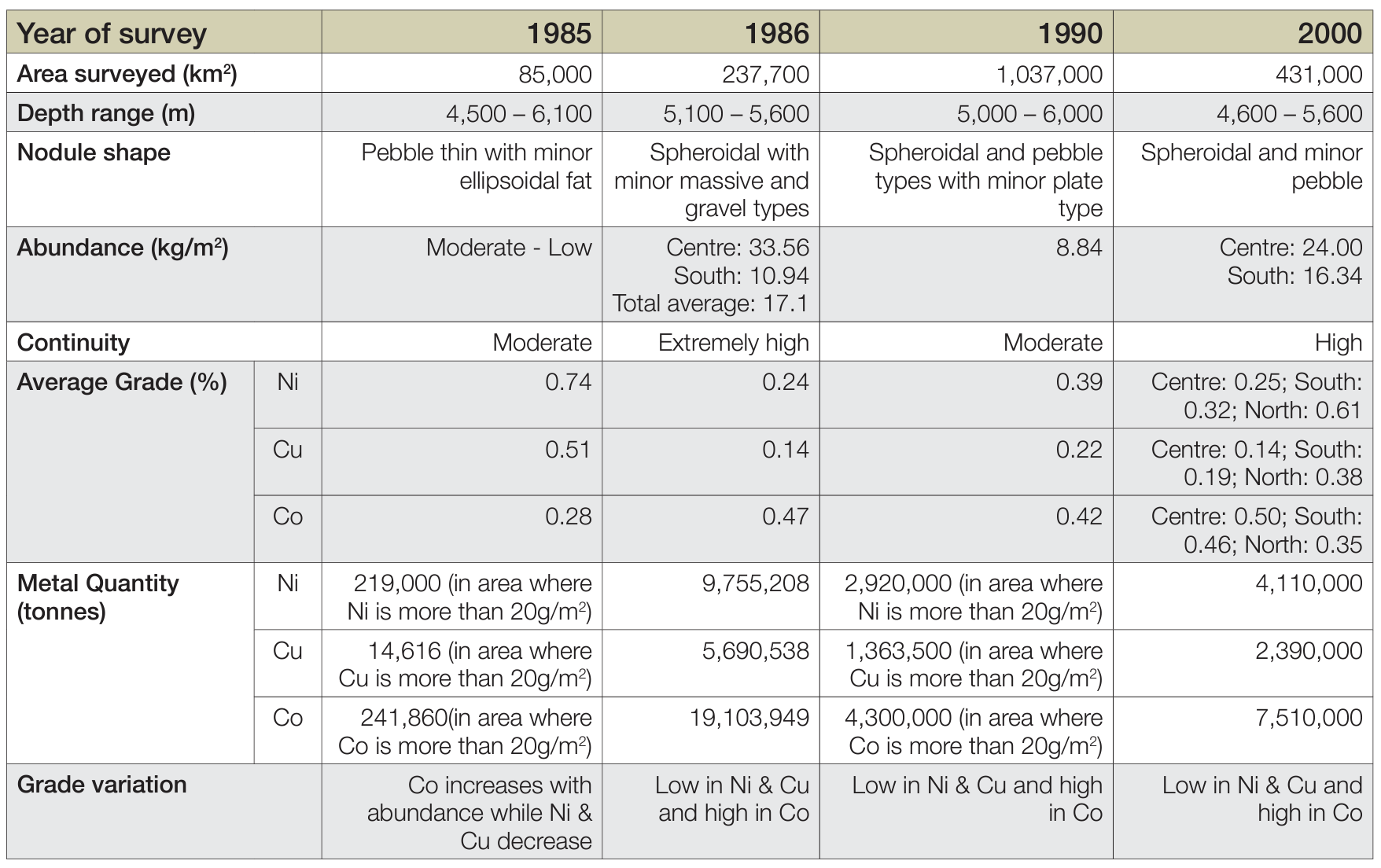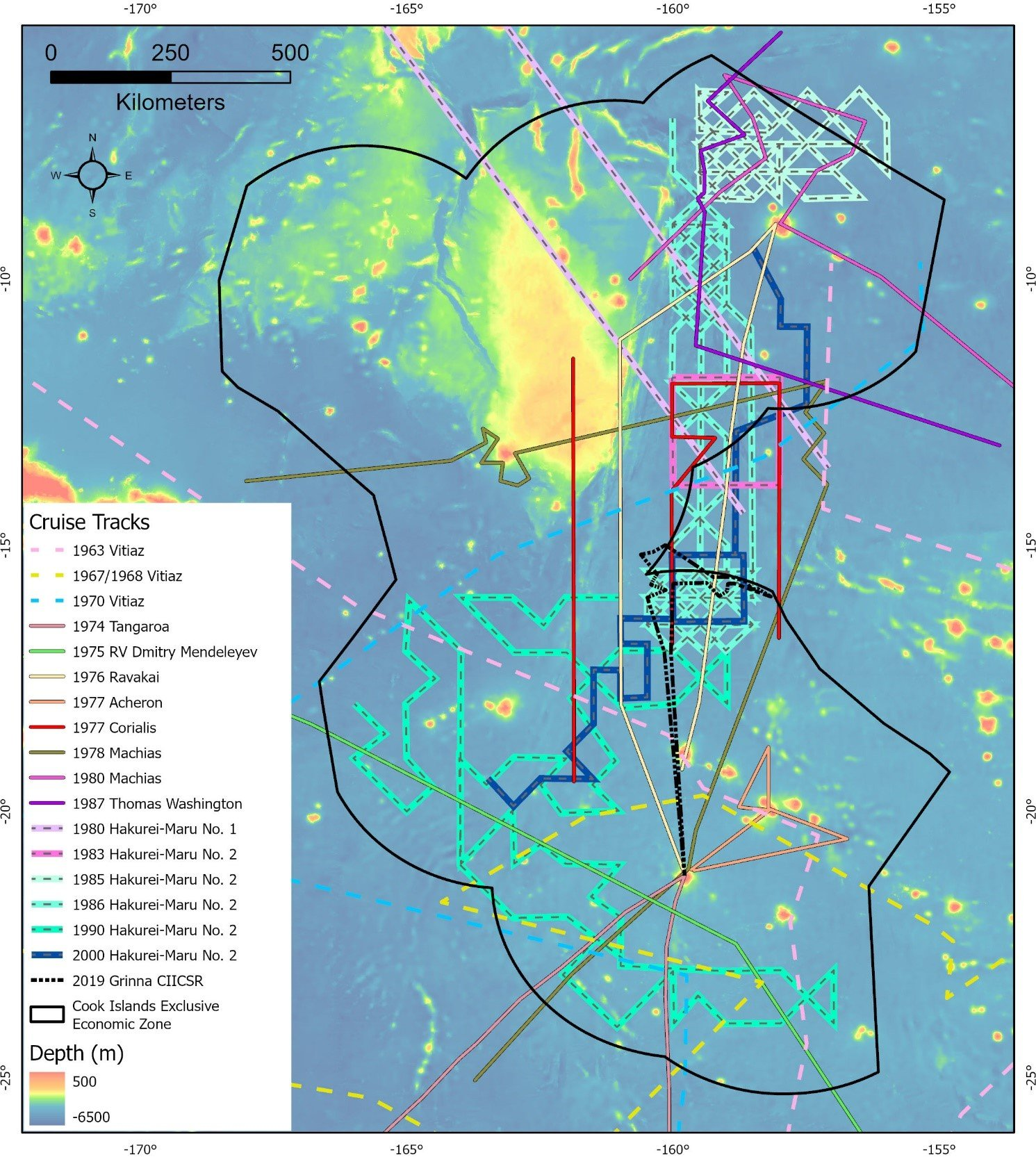The Cook Islands was the world's first country to approve a Seabed Minerals Act, and one of the first nations (after Papua New Guinea) to issue exploration licences for subsea minerals in their EEZ. Their governance regime and regulatory body (the Cook Islands Seabed Minerals Authority) are world-leading, and they have been successful in attracting investment from a variety of different deep-sea mining companies.
This success did not occur overnight, and we observe that their subsea mineral industry developed as a result of over 40 years of work, support, government interest and careful development. A brief history of this development is given below:
1972 - Committee for Co-ordination of Joint Prospecting for Mineral Resources in South Pacific Offshore Areas (CCOP/SOPAC) was formed to promote offshore mineral and petroleum prospecting
1976 - RV Ravakai performed free-fall grab surveys of the Cook Islands EEZ, discovering high abundances of polymetallic nodules
1977, 1978, 1980, 1983 - Further research cruises indicated that nodules were present in other parts of the Cook Islands EEZ
1982 - UNCLOS was ratified, spurring the formation of the Internal Seabed Authority (ISA) and work on issuing subsea mineral exploration licenses in international waters
1985 - SOPAC negotiates use of the Japanese Hakurei Maru No.2. Impactful surveying begins:
- First survey - 1985 covered the North Penrhyn Basin (JICA/MMAJ, 1986) - 38 samples
- Second survey - 1986 surveyed the South Penrhyn Basin - 60 samples
- Additional survey - 1987, Thomas Washington surveyed the North Penrhyn Basin
- Third survey - 1990, a survey of 1,000,000 square kilometres in the southern part of the EEZ (JICA & MMAJ, 1991) - 48 samples
1995 - Study conducted by Dr Allen Clark using the SOPAC data collected to date (Clark & others, 1995) estimated 7,474,000,000 tons of nodules, including 32,541,000 tons of cobalt, 24,422,000 tons of nickel and 14,057,000 tons of copper in the Cook Islands EEZ.
2000 - fourth SOPAC survey - 42 sample points
 Summary of four SOPAC surveys
Summary of four SOPAC surveys
2001 - The International Seabed Authority (ISA) issues the first 15-year exploration contracts for subsea minerals located in international waters
2001 & 2003 - Okamoto at SOPAC publishes summary reports on mineral resources in the Cook Islands EEZ
2009 - Cook Islands government approves the world's first Seabed Minerals Act
2011 - Papua New Guinea issues the first seabed mining licence within an EEZ, to Nautilus Minerals
2012 - Cook Islands Seabed Minerals Authority (CISMA) was established, which is the world's first governance body specifically focussing on seabed minerals and mining
2014-15 - CISMA produces a range of governance and scientific docs, including:
- Cook Islands Seabed Policy (2014)
- Cook Islands Prospecting and Exploration Regulations (2015)
- Seabed Minerals Amendment Act (2015)
2017 - Cook Islands government establishes Marae Moana - a multi-use marine park that is responsible for protecting and conserving the ecological, biodiversity and heritage values of the Cook Islands marine environment.
2019 - the first subsea exploration cruise in almost 20 years - MV Grinna performs 2 research cruises to survey specific areas of interest for a potential licence round
 Cook Islands subsea survey tracks as of 2019
Cook Islands subsea survey tracks as of 2019
October 2020 - the Prime Minister and Minister for Seabed Minerals Hon. Mark Brown announced the opening of a competitive tender for the exploration of seabed minerals in the Cook Islands
January 2022 - tenders for exploration licences were submitted to SBMA by various prospectors
February 2022 - exploration licences were issued to Moana Minerals, Cobalt Seabed Resources, and CIC Ltd.
July 2022 - exploration commences
The Cook Islands has been successful in issuing subsea mineral exploration licences, but the timeline above clearly indicates the amount of time, work, surveys and political coordination that were required to make this happen.